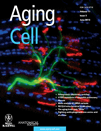Telomere dysfunctional environment induces loss of quiescence and inherent impairments of hematopoietic stem cell function
Summary
Previous studies have shown that telomere dysfunction induces alteration in the systemic (circulatory) environment impairing the differentiation of hematopoietic stem cells (HSCs) but these defects can be reverted by re-exposing HSCs to an environment with functional telomeres. In contrast, HSC intrinsic telomere dysfunction induces permanent and irreversible limitations in the repopulation capacity partially depending on the induction of checkpoints such as cell cycle arrest, differentiation, or apoptosis. It is currently unknown whether telomere dysfunctional environment can induce irreversible, cell intrinsic defects impairing the function of HSCs. Here, we analyzed the functional reserves of murine, wild-type HSCs with intact telomeres that were transiently exposed to a telomere dysfunctional environment (late generation telomerase knockout mice) or to an environment with functional telomeres (wild-type mice). The study shows that the telomere dysfunctional environment leads to irreversible impairments in the repopulation capacity of wild-type HSCs. The telomere dysfunctional environment impaired the maintenance of HSC quiescent. Moreover, the study shows that alterations in the systemic (circulatory) environment rather than the bone stromal niche induce loss of stem cell quiescence and irreversible deficiencies of HSCs exposed to a telomere dysfunctional environment.




